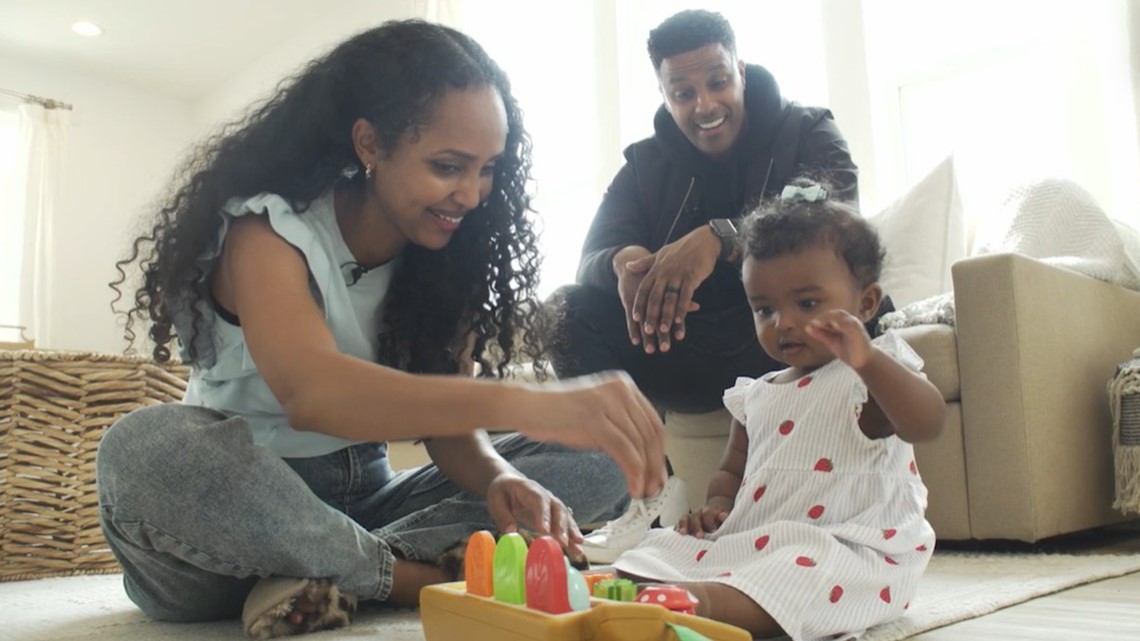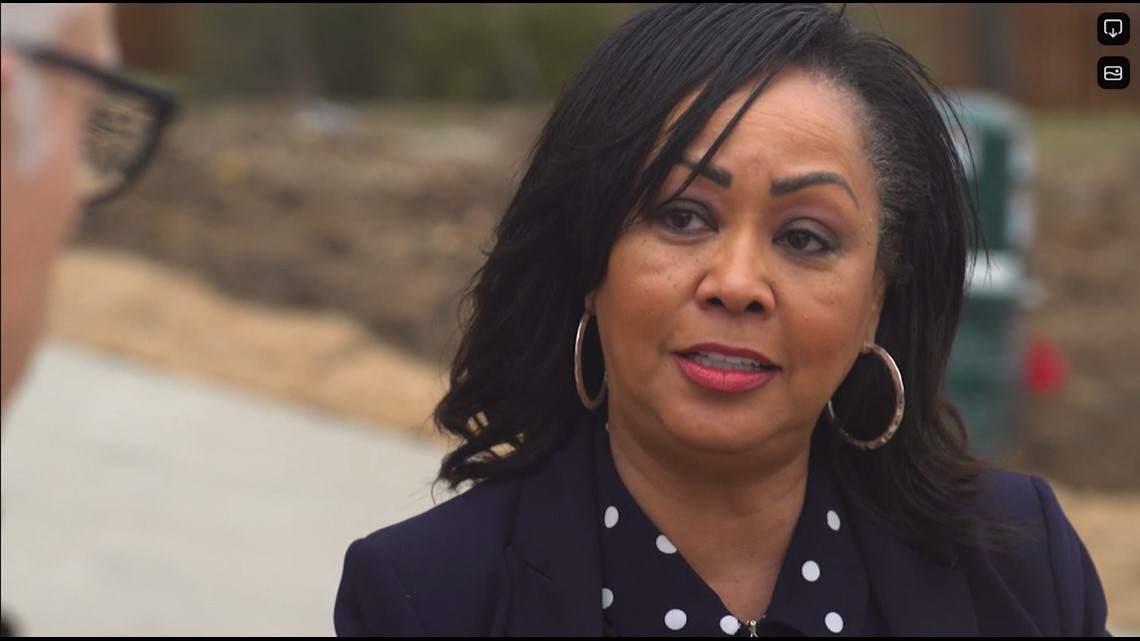DALLAS — For Mekeyas Newaye, the cost of buying a first home always seemed a little too far out of reach.
“When you're in ministry and your wife's a teacher and you have kids, you're like, ‘How am I going to be able to afford this?’” he said.
But then, he and his wife found a place called The Bottom. Located east of Interstate 35 and just south of the Trinity River levee, it was first settled in 1845 as a community for newly-freed slaves. Today, it's a housing development. About 100 new homes will rise from the empty lot, with 51 of them set aside as affordable housing for families with a max income of $71,200.
“Every month you're witnessing growth, you're witnessing resurrection,” Newaye said. “You're almost drawn to saying, ‘Oh, wow, I'm a part of something.’”


In our Banking Below 30 series, we've shown you how many banks avoid lending money in Dallas' Black and Hispanic neighborhoods – blocking minority families from building wealth.
Then we heard about banks lending money in The Bottom. We wondered, what would convince a risk-averse bank to lend money in a high-minority, low-income neighborhood with crumbling infrastructure where hardly anything's been built in more than 50 years?
“I see hope,” Effie Dennison, director of community development and corporate responsibility at Texas Capital Bank said. “I see a dream coming to fruition.”
In a previous story, we reported that Texas Capital participates with other banks to lend hundreds of millions of dollars to high-cost lenders that, critics say, prey on minority neighborhoods.
But here in The Bottom, Texas Capital was the first to make a loan. Though the amount is undisclosed – Dennison describes it as a line of credit in "the millions" that funds construction of new homes – Dennison says banks have an obligation to look for these kinds of deals in the minority neighborhoods below I-30 in Southern Dallas.
“You cannot do that sitting in your desk and think it's going to just come and fall in your lap,” she said.
Dennison said one reason the bank felt comfortable lending here is the city of Dallas made it attractive by pouring in its own money: $2.4 million given to developers to buy up lots and make neighborhood improvements; and $5.25 million spent on digging new sewer lines, paving roads and installing street lights.
“This investment is one that we see as good business, not a charity,” Dennison said. “This loan had to underwrite just like any other, but we knew that we had to look at it from a different lens.”
Does that mean that the bank will accept making less money in The Bottom compared to an investment in Prosper or Plano, for instance?
“We're really looking at the overall impact of what we're doing,” Dennison said. “This is our legacy, too.”


They're building about 10 houses a year in The Bottom and they are being built by small Black builders, like Calvin Berry. In his career, he’s built about 300 homes, but even someone as experienced as him struggles to find a bank willing to make construction loans.
“We have to go take a mortgage out on our home,” he said. “You mortgage your own home to go build a home … because the bank is not going to give you the money.”
Berry doesn't need a bank on this job because he's been hired as a contractor. Collecting a paycheck is much less profitable for him, but he hopes his work here will lead to better banking relationships – so he can get his own loans to build his own houses in other parts of town.
“You can't get anywhere without the opportunity,” Berry said. “Even if I have got to work a little harder… it affords me some connections that I might not have had, you know, but I'm here again."


For Newaye, it wasn't just the affordable selling price that enabled him to buy his home in The Bottom. It was also Bank of America.
Previously, we reported about how few loans some banks make in the neighborhoods surrounding their Southern Dallas branches. That includes Bank of America. Near Fair Park, it made 19 home loans over the course of two years. However, in a similarly-sized area in Dallas’ Lakewood neighborhood above I-30, it made 143 loans in that same time.
But Newaye had a different experience. For his loan, Bank of America gave him cash to meet his down payment and a discount on his closing fees.
Bank of America said this is part of an initiative to help 60,000 low- to moderate-income families buy homes by 2025, and strengthen neighborhoods.
Being able to go from renter to homeowner is life changing, Newaye said.
“I think homeowners, especially for a family, it's something deeper,” he said. “You get to say, ‘Every little bit of this home is mine, and I don't have to worry about, are we going to … move to another apartment?’”
City leaders say there is an urgent need for 20,000 units of affordable housing in Dallas. When it is built, it’s mostly apartments. But it's home ownership that truly impacts lives – sending ripples of confidence out into a community. And that kind of change doesn't happen without a bank that's willing to lend.

